



So you want to raise beef cattle?
Q&A for beef cattle producers just getting started in the industryRaising beef cattle for profit can be a satisfying enterprise. However, there are a number of management skills that each beef producer should have to be successful. Each livestock enterprise has different resources: land, labor, capital, feed, and management. To raise beef cattle sustainably, you must manage these resources.
In addition to managing resources, new producers must ask themselves, What do I need to get started? This question involves considerations for the type of animals a producer wishes to raise as well as where to find these animals, how to select them, and what equipment will be needed for the operation. Producers also need to consider how they will feed their animals and what health care practices they will use to keep the animals healthy. Savvy producers will let markets identify the type of animals they should raise in order to generate a profit. This fact sheet may be used as a guide for beef cattle producers just getting started in the industry to learn:
- How to decide what type of animal you should raise
- About the different breeds and how to select the right one for you
- Where to purchase your animals
- What to look for as the ideal characteristics
- What equipment you'll need to raise your animals
- How to breed and raise your beef cattle
- What to feed and how to care for your animals' health
- What it takes to market your animals
What type of animals should I raise?
The first thing to decide when starting a new beef cattle enterprise is what type of animals to raise. This decision should directly reflect the markets a producer has available to sell beef cattle and consider the resources available on the farm and the producer's individual goals.
Beef cattle may be used to produce meat or generate seedstock (breeding animals). The intended markets may dictate what breed or breeds are best suited for the operation. Some producers choose to breed females to produce calves to sell for breeding stock or market animals. Other producers may prefer to purchase weaned animals, also known as feeders, to raise to market weight.
Producers should start by determining if they wish to raise purebred or commercial stock. A purebred operation typically raises animals of one breed. Often a purebred operation will have all registered animals that can also be sold through purebred sales. A commercial operation may have unregistered purebred animals, or they may have crossbred animals. Crossbred animals have the benefit of hybrid vigor, which is simply the ability of crossbred offspring to increase in productivity over the average of the breeds that were part of the cross. This means that a crossbred calf could grow faster, or a crossbred female could produce more milk for its offspring.
Selecting a breed
Each livestock breed has different traits for which they are recognized. Breed associations can provide information on those traits and help you narrow your decision regarding what breed or breeds fit best with your operation. Beef cattle breeds are often divided into maternal (cow) and terminal (sire) breeds. Maternal breeds are typically moderately sized and recognized for their ability to raise healthy calves. Terminal breeds are generally a bit larger in their size and commonly used for meat production. In addition to these two classifications, composite breeds of cattle also exist.
Composite breeds are cattle breeds that are generally made up of maternal and terminal breeds and often combine genetics for specific environments or markets. While many producers use both maternal and terminal breeds in their systems, composite breeds have been established and are recognized by their pedigree. Many breeds exist in the United States. The more common breeds are listed in the table below.
Maternal
- Angus
- Hereford
- Shorthorn
- Red Angus
Terminal
- Charolais
- Gelbvieh
- Limousin
- Simmental
- Maine Anjou
Composite
- SimAngus
- Maintainer
- Braford
- Beefmaster
- Limflex
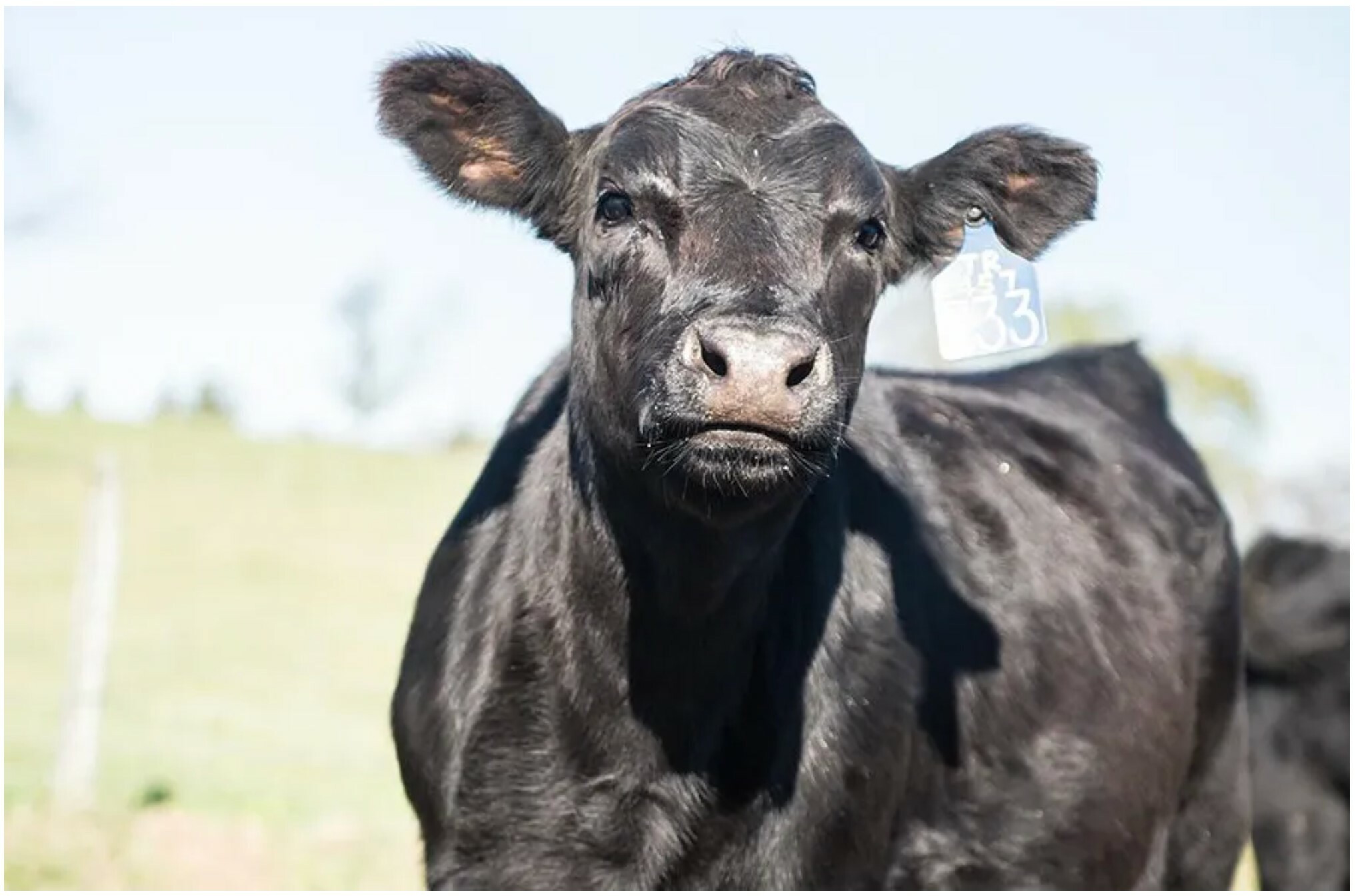
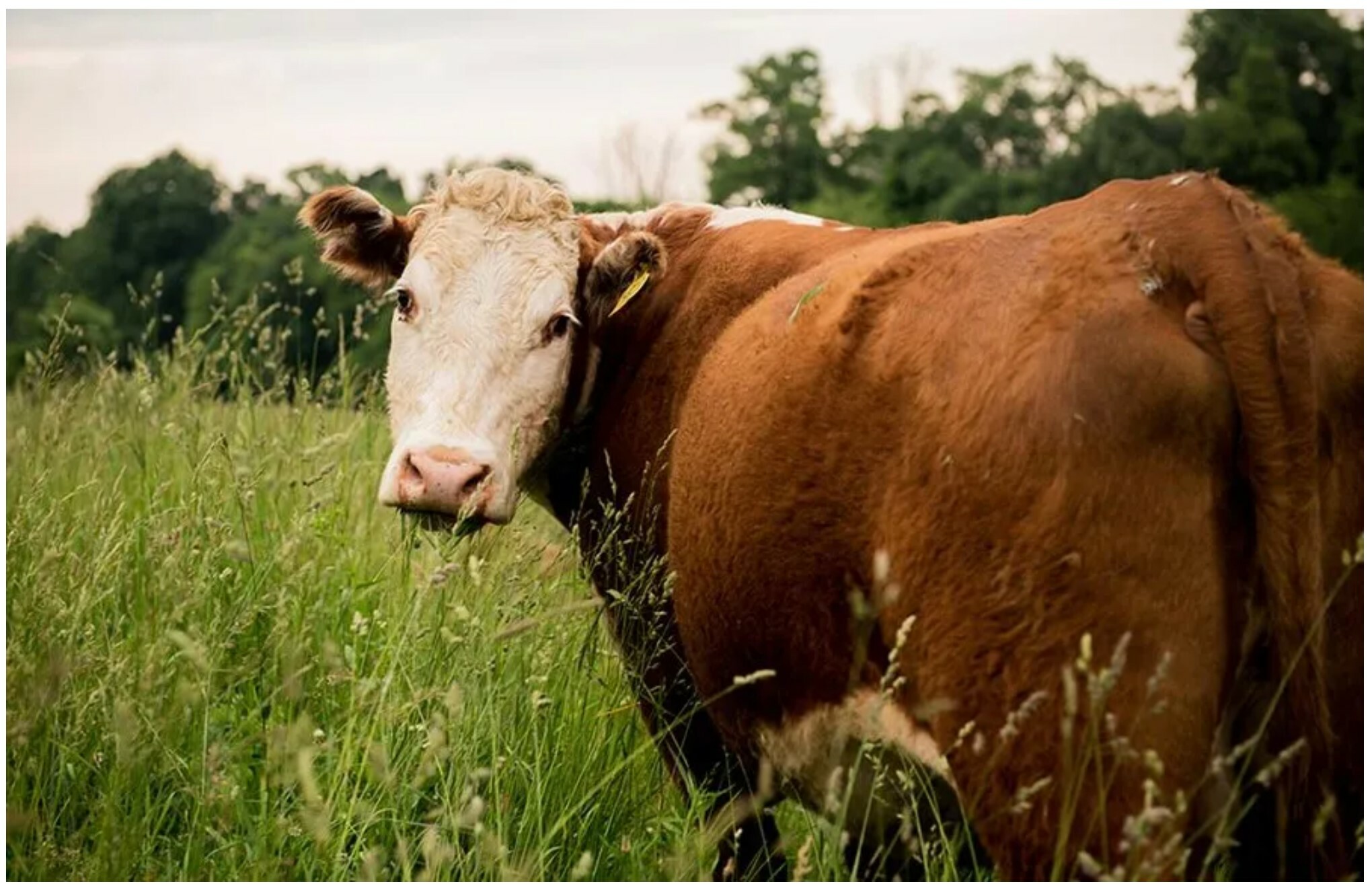
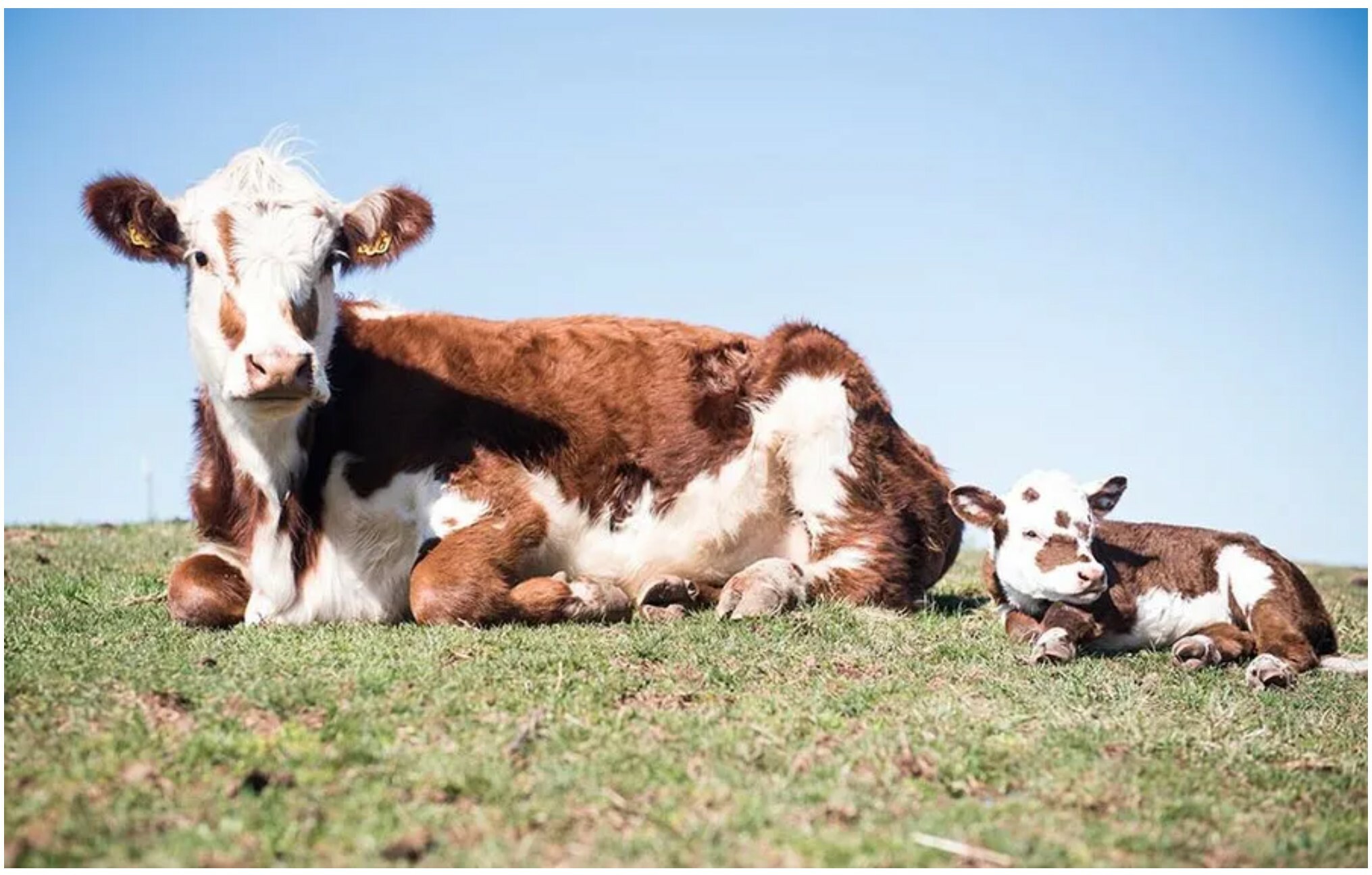

Where can I purchase animals?
Animals can be purchased through several different means. Many sales are held across the country throughout the year and may offer only one breed, a variety of breeds, or even crossbreds for sale. Another option would be to locate reputable breeders and purchase directly from their farm. A wide variety of animals may be available at a local auction barn; however, let the buyer beware. Animals sold through this venue are more likely to have health issues.
Choose breeding males that will complement the outstanding traits in your females and improve their weaknesses. Always use the best bull you can afford to improve the genetics in your herd. The male has a great influence on your herd because his offspring could remain in the herd for a number of years.
Be conscious of selecting and keeping good productive females that will produce and wean one calf per year without assistance and maintain their body condition without becoming overly thin or fat.
Selection principles
There are two methods to select livestock: animal performance and visual appraisal. Animals should first be selected on performance (e.g., how well calves grow or how much calves weigh at weaning), and then the higher-performing animals should be evaluated visually.
Performance selection principles evaluate measurable traits such as birth weight, weaning weight, yearling weight, or meat yield and quality.
Producers who evaluate growth traits should adjust weaning weights to account for the sex of the calf, age of the dam, birth weight, and weaning weight. Weaning weights are typically adjusted to 205 days of age.
Progressive cattle producers with registered animals can enroll their herd in breeding association databases to obtain expected progeny differences (EPDs). These EPDs use genetic linkages to assess genetic merit for growth, carcass, and maternal traits. EPDs allow producers to evaluate animal genetics without environmental influences.
Commercial producers can utilize performance data when selecting a new bull. More information on expected progeny differences can be found by contacting breed associations.
Visual animal appraisal evaluates aspects such as structural correctness, muscling, body capacity, and breed character. Evaluating structural correctness allows producers to identify animals with defects that are not apparent through performance evaluation.
Purebred producers who raise registered stock should become familiar with breed characteristics associated with the breed they raise, such as:
- ear length and shape
- color and distribution of color
- polled status
- defects that disqualify animals from registration
These depicted bulls exhibit the ideal characteristics of breeding males.

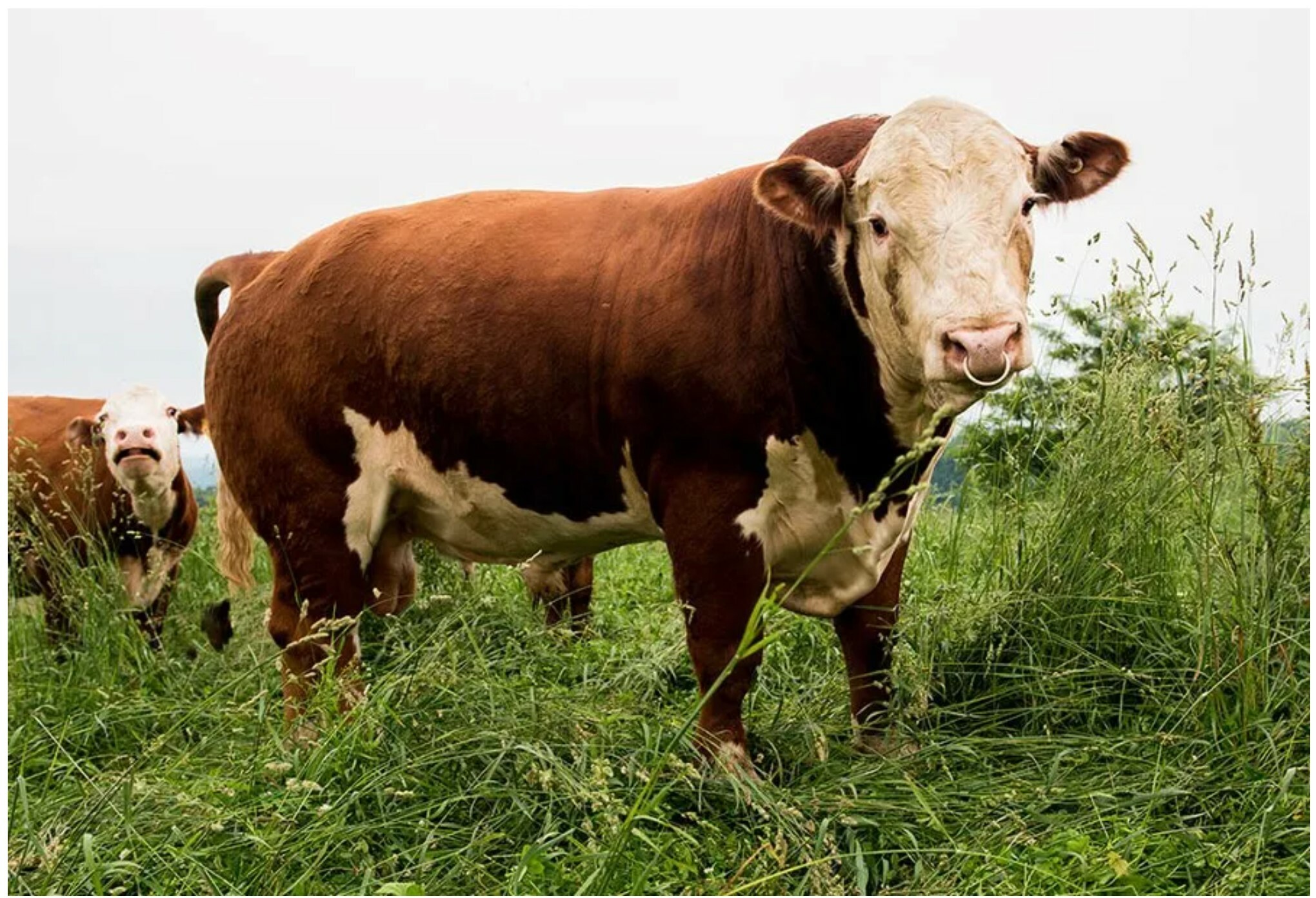
Equipment needs
After the appropriate animals are chosen for the operation, the equipment necessary to maintain those animals must be gathered. Beef cattle operations can be low input but still need a variety of equipment. Basic equipment includes feeders, water tubs or watering systems, and health care equipment. Because safety is a concern when managing these large animals, beef cattle operations should also have equipment for handling cattle.
Feeders
Feeders should be used to prevent animals from eating off the ground. Well-designed feeders will also prevent animals from wasting feed by spilling it onto the ground. There are potential health concerns when cattle eat off the ground, including parasite infections; however, feed costs represent the primary input cost on any beef cattle operation and as such, feed waste is a driving factor for feeders.

Many different sizes and styles of feeders are available for beef cattle. Some feeders can accommodate feeding both hay and grain, while others may be designed to feed just hay or just grain. Producers should be sure that all animals have access to the feeder if feeding at specified time frames. If animals have free-choice access to the feeders throughout the day, smaller feeders can be used.
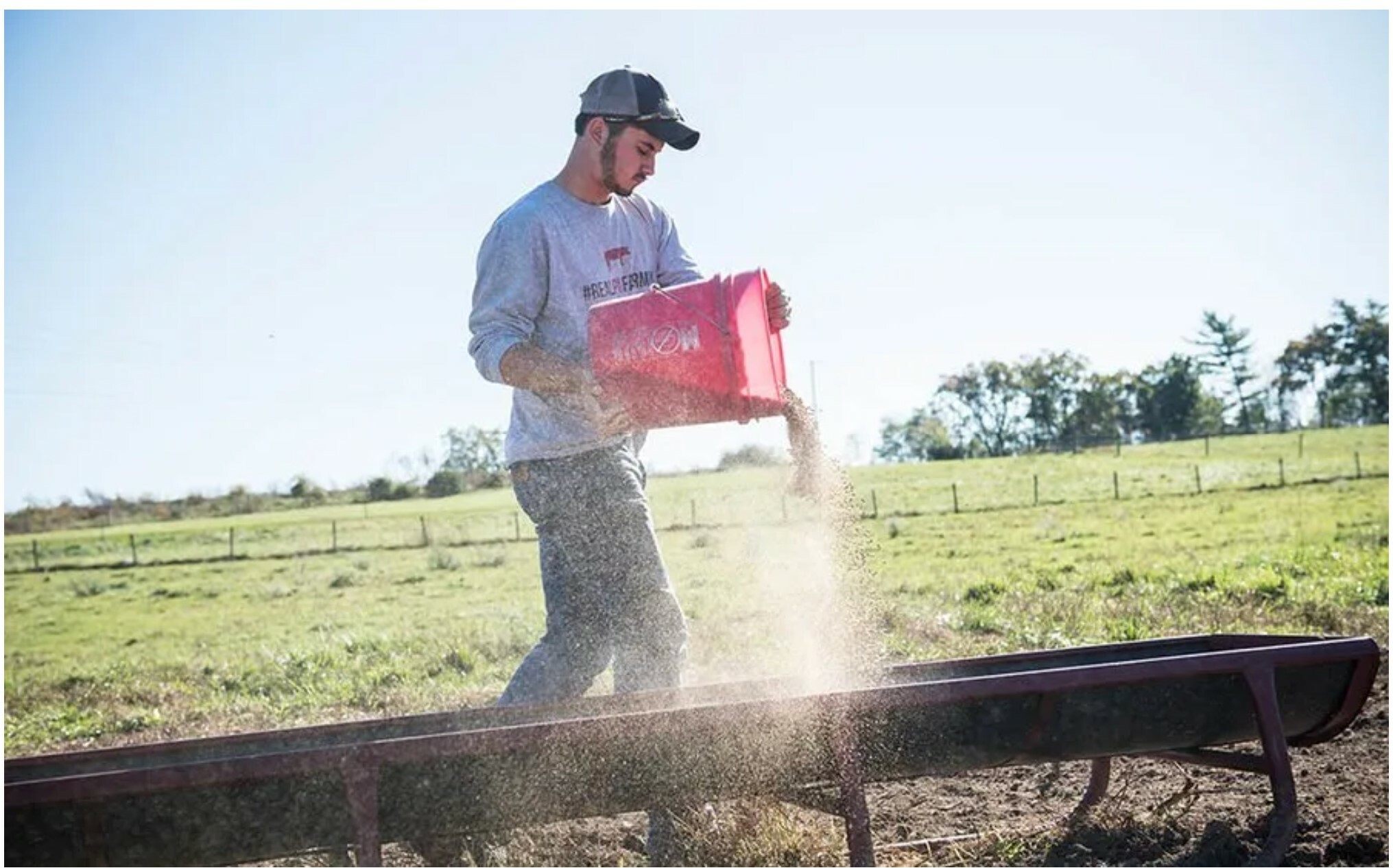
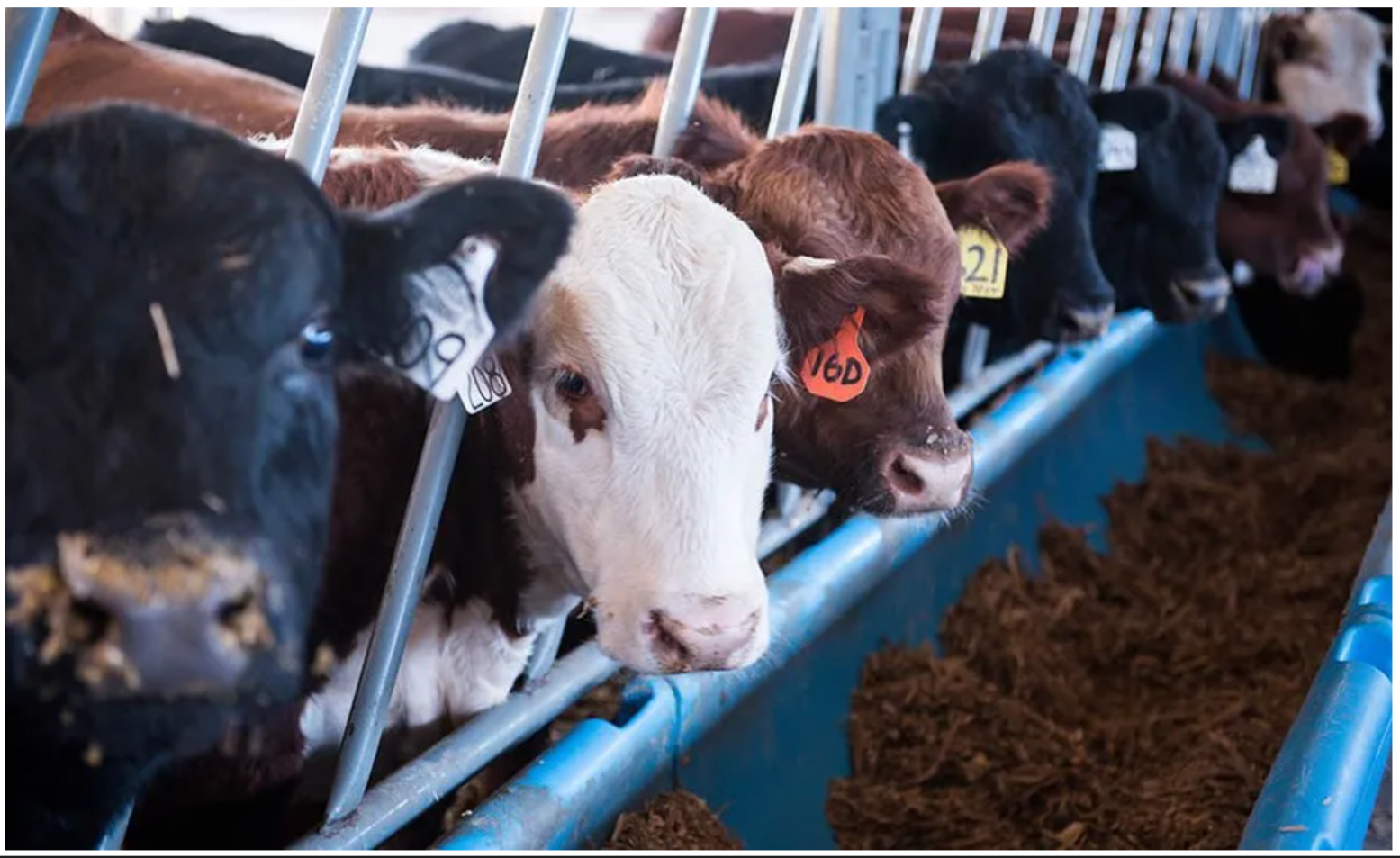
Beef cattle of all classes should always have access to a good-quality mineral mix formulated for their production needs. Most producers provide beef cows and grazing cattle free-choice minerals when on pasture, while others limit-feed minerals daily in a grain mix.
Fenceline-style feeders allow producers access on one side to place feed and grain into the feeder while animals access their feed on the other side. Walkthrough feeders allow producers to walk down the middle of the feeder. Grain can be placed in a trough on either or both sides and hay is shared in the central walking area. Producers should be careful not to contaminate feeders with manure-covered footwear.
Larger operations often feed hay in the form of large round or square bales. Many styles of hay feeders exist, but the inverted-cone-style feeders are often recommended for beef cattle as they usually waste the least amount feed waste.
Water
Water is possibly the most important nutrient because it impacts feed consumption. Poor-quality water or not enough water can decrease feed intake and result in decreased animal performance. Producers can supply water using anything from buckets to troughs to automatic watering systems. As with feeders, many different styles are available. The key is that water should be fresh, clean, and available at all times.


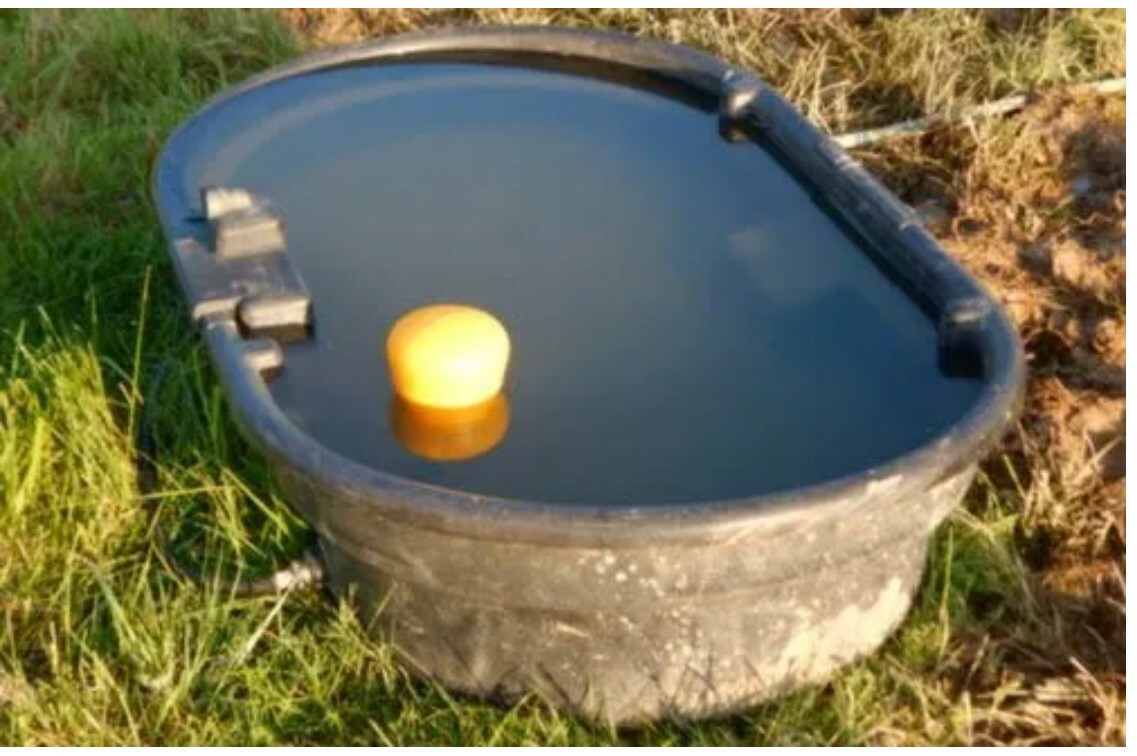
Pasture systems
Many beef cattle, particularly mature cows and bulls, graze pastures throughout the spring, summer, and fall. Producers should pay close attention to pasture height in an attempt to maximize forage utilization. Pastures should be subdivided to provide an adequate amount of forage for the grazing time, often four to five days. Animals should be moved to a new section of pasture by the time forage has been grazed down to 4 inches in height. Rotating pastures ensures the nutrients from manure are spread out and that cattle utilize available resources efficiently. Continuous grazing can cause forage stand damage in overused or high-traffic areas and encourages weed growth in other less-desirable areas of the pasture.
A good-quality perimeter fence contains livestock inside the pasture and keeps predators out. Many producers prefer high-tensile fencing with some wires electrified. Subdivision fencing divides larger fields into smaller areas to better manage forage growth. Subdivision fencing for beef cattle can often be a single strand of polywire with step-in posts to reduce input costs. Most cattle will respect one strand if it is electrified.
Pastures should also provide access to water. This ranges from temporary systems that move with the animals to permanent systems. Many producers choose to install underground systems that can be accessed throughout a pasture system to reduce the labor of hauling water. Depending on the system and region, it may be necessary to access electricity to heat waterers in cold months.
Health care equipment
Routine health care employs practices to prevent disease. Common practices include tagging, vaccinating, dehorning, castrating, and deworming. These practices require basic equipment such as tags and tagging pliers, syringes and needles, elastrator bands, a band expander tool, and a drench syringe or drench gun. Tagging is considered a health care piece of equipment because tagging is important to identify treated animals.
Producers may also wish to dehorn their cattle to prevent horn growth. This is often performed with an electric dehorner shortly after the horn buds break through the skin. Dehorning prevents future injury to other animals and handlers.
Hoof trimming is another health care equipment item. Hoof trimming is not considered routinely necessary in most beef cattle operations. In addition, most beef cattle must be put in a tilt table in order to have their hooves trimmed for the safety of both the trimmer and the animal. Therefore, many beginning cattle producers will contact a professional should hoof care be necessary.

Other types of equipment
Larger equipment may be used by beef cattle operations to allow producers to handle or manage animals more efficiently. Producers can use a scale to monitor animal growth performance at weaning and other times throughout the year. A scale should also be used to weigh animals to calculate the correct dosage for medication treatments. Three types of scales are often used by livestock producers: beam, dial, and digital.
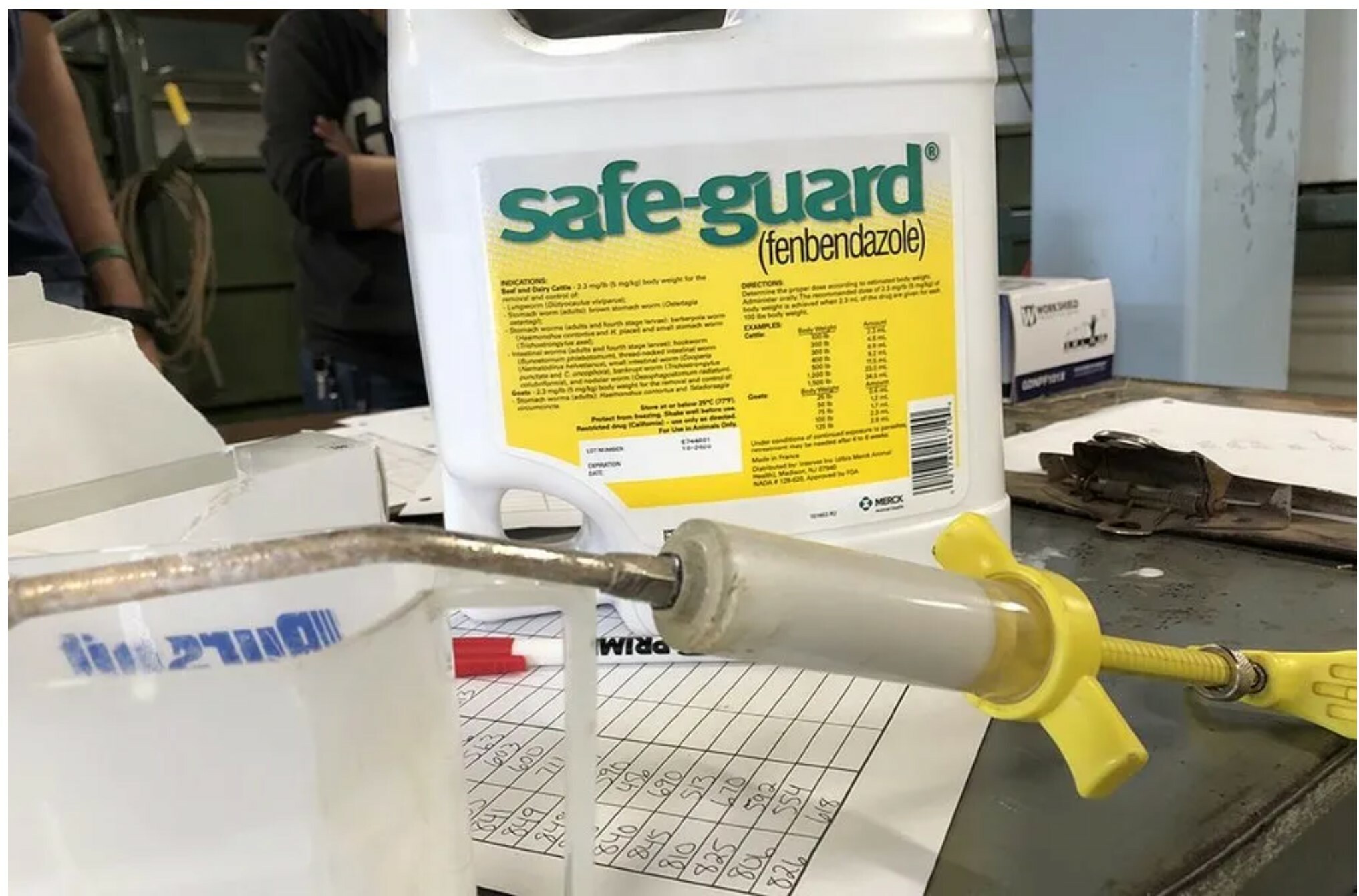
Most feeder calves and finished cattle are bought and sold on a weight basis. Therefore, because the economics in beef systems are based on pounds of calf to sell or weight of finished cattle, scales are an important part of cattle operations. Scales can also help monitor weights at critical times throughout the year, such as breeding, weaning, and so on. All scales should be tested to ensure accuracy. Simple scales can be placed in line in a handling system.
Handling system equipment allows producers to more efficiently handle animals. It functions by gathering animals into a group pen and then funneling them into the chute. Animals walk single file down the chute, where they are held for routine health care or sorting. Gates at both ends of the system contain the animals while producers perform tasks. Gates can function by sliding back and forth or up and down like a guillotine.

If the beef cattle operation intends to use implants to increase growth performance of market animals, a handling system should be used. In addition, if the operation desires to breed using artificial insemination, a handling system is a must.
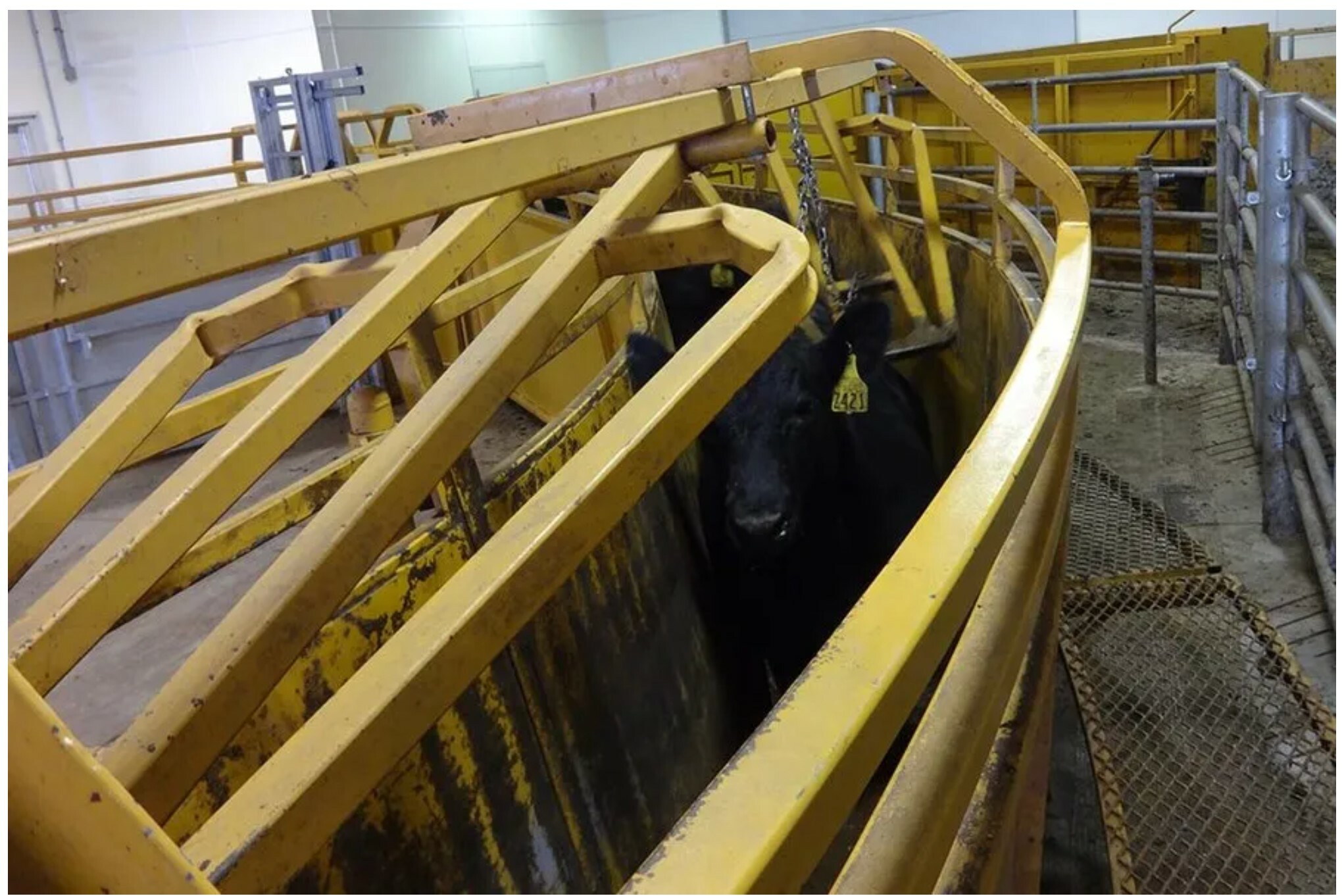
Reproduction and breeding seasons
Gestation length for beef cattle is about nine months, varying slightly among breeds and sires. However, the typical gestation length for most cows ranges from 282 to 288 days.
Cattle will cycle throughout the year. However, managing a defined breeding season will help improve the efficiency of the cow herd and marketability of the calves. Most productive cattle operations maintain a single breeding season. While many operations breed animals to calve in the spring when weather is warming up, some may choose to calve in the fall to take advantage of a less saturated calf market. Purebred cattle used for seedstock are often bred to calve early in the year, January or February, so that those animals can enter the breeding herd at heavier weights.
Estrus cycles and age at puberty vary slightly among breeds. If breeding heifers (females that have not calved before), they should weigh at least 65 to 70 percent of their mature weight by the start of the breeding season with a target of 85 percent of their mature weight at calving. Generally, it is expected that heifers will meet this weight and be ready to breed between 11 and 15 months of age. It is also advisable to breed heifers one cycle ahead of mature cows so that they have additional time to rebreed the following season.
Some producers will take this a step further and synchronize their females so that they are sure to breed the heifers at the desired time and the rest of the cows come into heat, or cycle, at the same time about a month later. This synchronization is necessary for an efficient and effective artificial insemination procedure and is most often accomplished with the use of a CIDR, although feed additive protocols exist for heifers. The CIDR contains hormones and is inserted vaginally into the females. Many protocols are available for synchronization and beginning producers are advised to work with their veterinarian to establish their own on-farm protocol.
In most instances, cattle give birth outdoors and, thus, calving season is timed to start when weather warms up and grass is available on pasture. However, some producers prefer to breed earlier in the breeding season in order to market at specific times in the summer or fall. In other situations, producers may breed earlier so that calves are older and heavier while on pasture.
Producers wishing to calve earlier may need to house animals in a barn, such as a bank barn, depending on the climate. Calving indoors can help prevent ears from freezing and ensure calf viability in colder temperatures.
Signs of impending calving
As a cow nears her time to give birth, she exhibits several signs that the birthing process will begin. Shortly before calving, the udder will begin to tighten. This tightening is the udder filling with colostrum. Colostrum is the first milk and it contains antibodies that help protect newborn calves from disease.
When the cow is ready to give birth, the muscles around her hips will begin to relax and may appear as if they are sinking. The vulva changes color and is most apparent with lighter skin colors. For example, a light pink color will change to a darker pink color. Perhaps more noticeably, the vulva will swell. The udder will feel full and tight at this point. The cow will also refuse feed and move away from the herd.
The first sign that the female is in labor is the appearance of the water bag. Within a short period of time, the front feet and nose of the newborn should appear. This will progress as the female pushes to expel the newborn. Once the calf is born, the mother should begin licking to dry off the newborn and encourage the calf to stand and nurse.
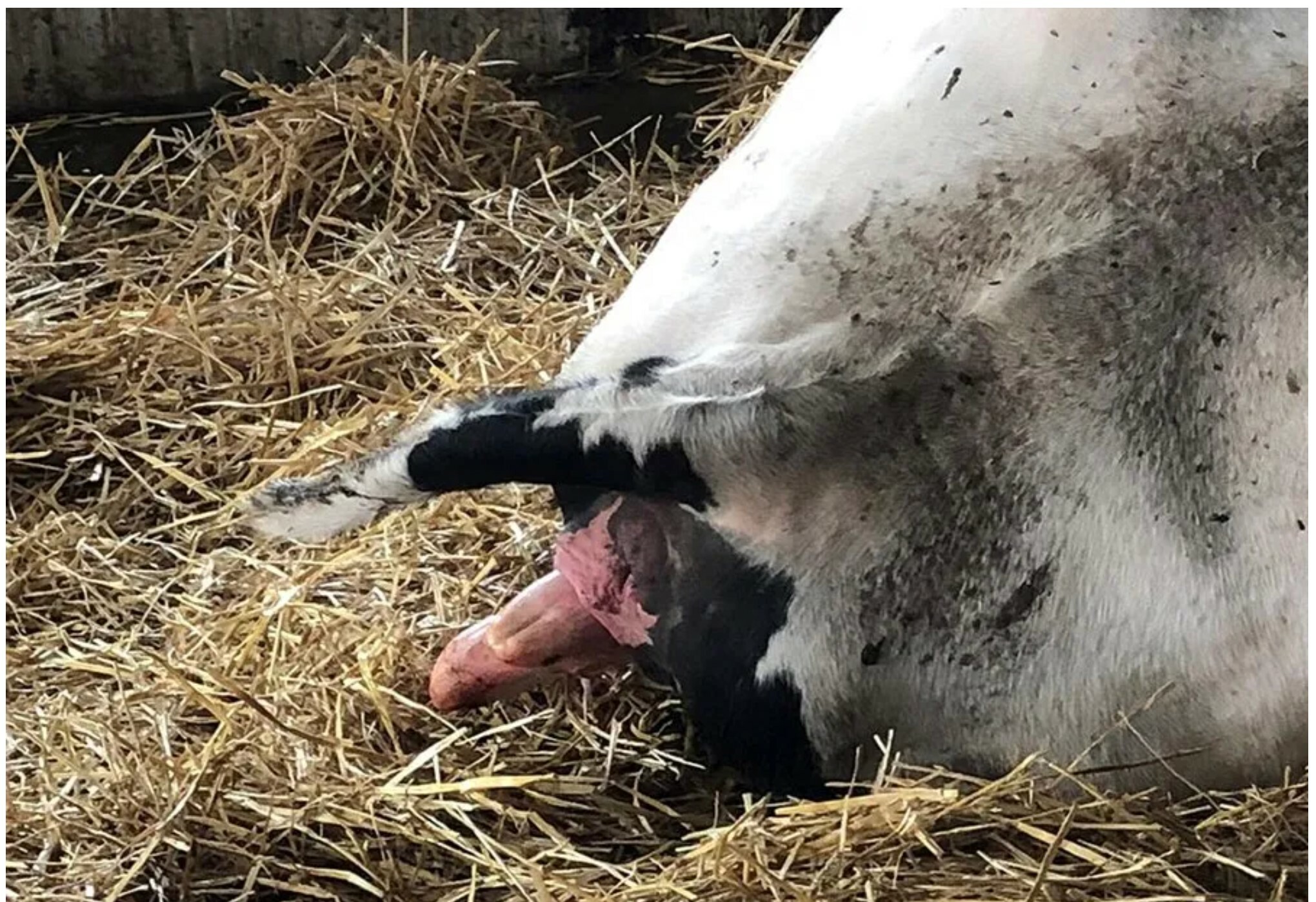
Typically, most beef cows calve on pasture and require little assistance. If assistance is required, inexperienced producers should consult a veterinarian or an experienced producer for assistance. Assistance may be required if a calf has not been delivered within six hours of the water bag appearing or if the cow is found straining and the water bag appears to have already been ruptured. Always use caution when trying to work with or around laboring cows or cows that have recently delivered. Dams will defend their young well against predators but may turn this aggression on an unsuspecting human trying to tag or examine a new calf as well.
Pay close attention to newborns for the first couple days after birth. Mothers should be attentive to newborns and willing to stand for newborns to nurse. Newborns should stretch when they stand and appear alert. Newborns that cry for their mother or rush to nurse as soon as they get up likely are not receiving enough milk. Weak calves may require feeding with a tube. Consult a veterinarian or an experienced producer for assistance.
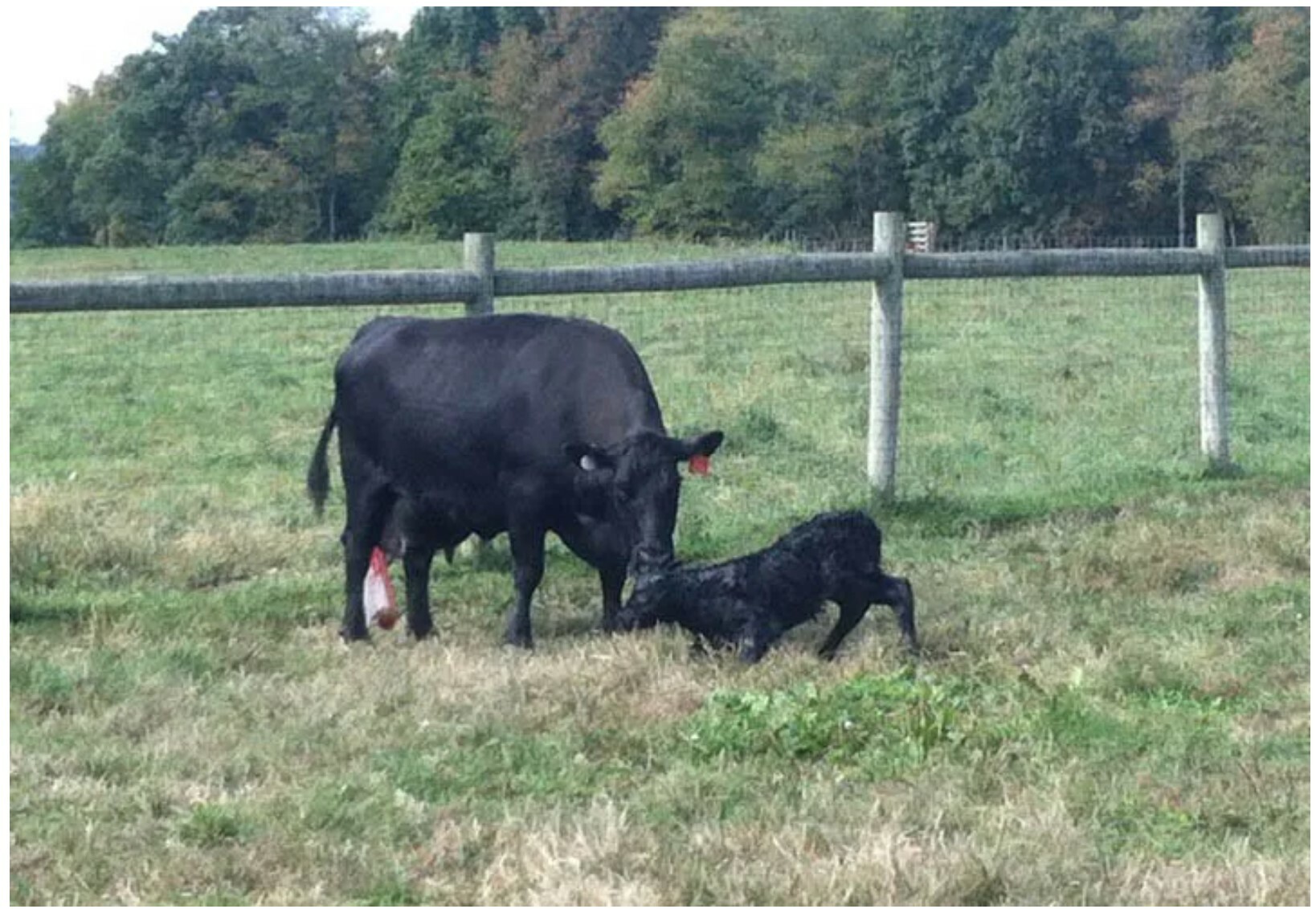
Feeding and nutrition
All animals require water, protein, carbohydrates and fats (to provide energy), vitamins, and minerals in their daily diet. These may come from a variety of sources but should be balanced to meet nutritional requirements. Nutrient requirements change throughout an animal's lifetime and reflect its stage of production: growth, maintenance, breeding, pregnancy, or lactation (milk production).
Forages such as pasture and hay often meet requirements for mature animals, but they may not meet requirements for fast-growing animals. Therefore, additional protein or energy sources may need to be added to the ration to meet requirements of young, rapidly growing cattle.
Additional protein requirements may be met with better quality hay or through sources such as soybeans, soybean meal, or distillers grains. Additional energy requirements may be met with a variety of grain sources, but cattle are most commonly fed corn because it is often the cheapest energy source.
In most cases, pasture provides the most economical feed source for mature cows. Cattle should rotationally graze pastures to yield the best quality and quantity of grazing days. In general, animals should enter a pasture when forages are 6 to 10 inches tall. Animals should rotate out of a pasture by the time the forage has been grazed down to 4 inches. This not only provides high-quality feed for the animals but also helps maintain healthy plants.
Grain supplements are most often used for growing cattle or in times of pasture shortage. Feeding grain to growing cattle increases weight gain. One common grain feeding practice is creep feeding, the practice of supplying good-quality grain and/or hay to young calves while they are nursing. This boosts weight gains and body condition, or level of fatness.
Health issues
A good indicator of healthy cattle is their body condition. Body condition for beef cattle is scored on a nine-point scale with one being emaciated and nine being obese.
Breeding females should be maintained at an average body condition score of five to six. Animals with decreasing body condition scores, or that are losing weight, signal a potential health issue.
The first step to keeping animals healthy is to prevent diseases from entering the farm. Implementing biosecurity practices can help keep diseases off the farm. Any new animal that arrives at the farm—and animals that leave the farm and return—should be quarantined from other animals for three to four weeks. In addition, changing shoes and clothing after visiting locations where you had contact with other cattle can help prevent bringing diseases to your farm. Visitors to the farm should be asked to either disinfect their shoes or wear plastic disposable boots.
All producers should form a relationship with a veterinarian. This veterinary-client-patient relationship allows the veterinarian to become familiar with your farm management practices and your animals and to more quickly address any health issues within your herd.
Internal and external parasites
While most beef cattle systems do not experience production losses directly as a result of parasites, it is partly because they are very easy to treat and prevent in beef cattle. Broad-spectrum antiparasitics can be applied as a pour-on or an injectable product. Many beef cattle producers choose pour-on products because they are easy to apply and fairly effective.
Additional internal parasites that may affect beef cattle include worms and coccidia. External parasites that may affect beef cattle include flies, ticks, and lice. Consult your veterinarian for more information on individual parasite species and their treatment.
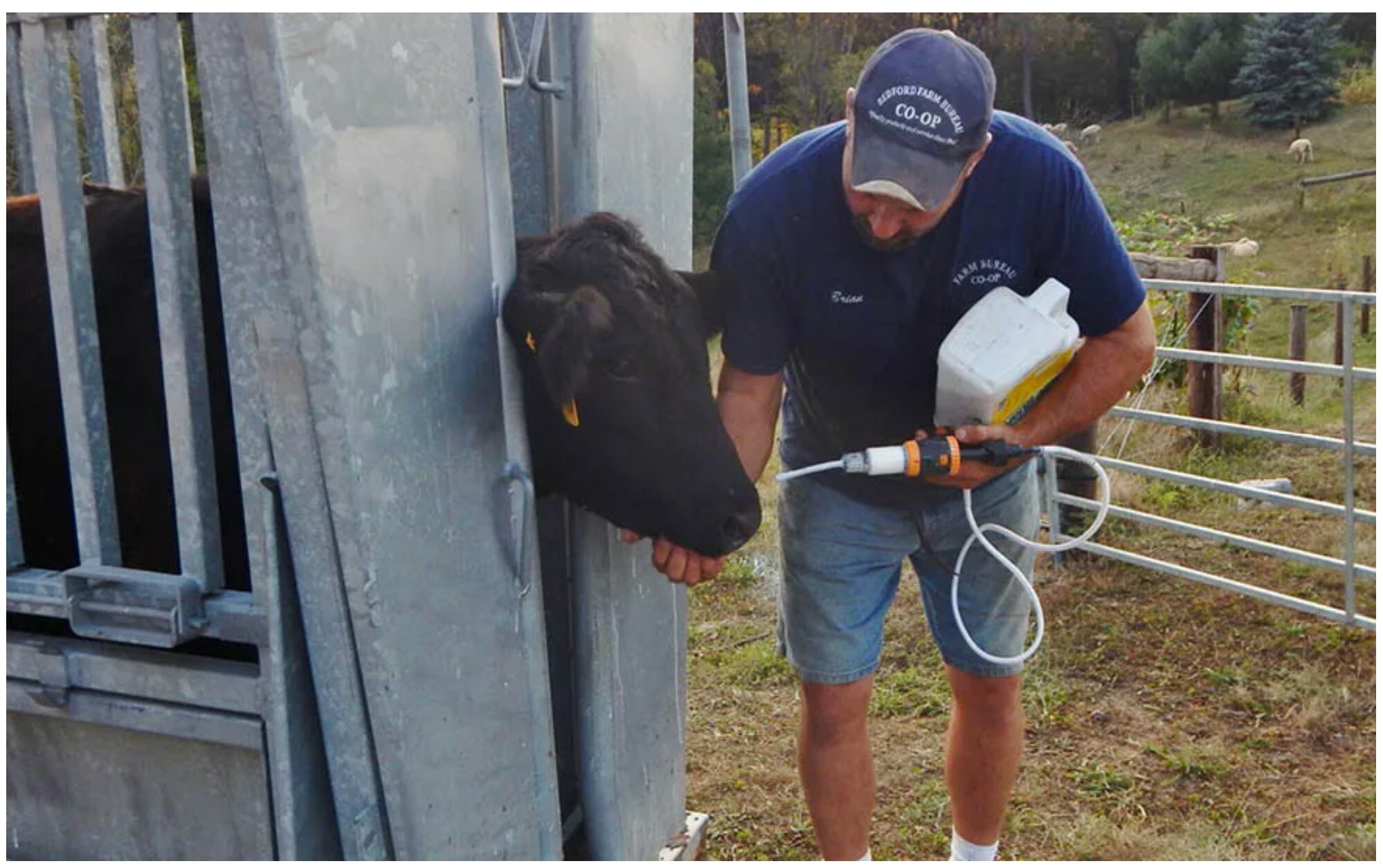
Abortion diseases
Perhaps more critical than the parasites themselves are the impacts they may have on reproductive performance. Several parasites that affect cattle can cause abortions. For example, anaplasmosis causes an anemia so severe that cattle may abort. It is most commonly spread by biting insects like ticks; however, because it is a bloodborne disease, humans may play a role in infecting cattle by reusing contaminated needles and castration and dehorning equipment.
There are other abortion diseases that are caused by sexually transmitted diseases. These can include chlamydia and trichomoniasis. Buying bulls and replacement females from reputable farms or brokers and asking about the history of venereal disease can help prevent the spread of these disorders to your farm.
Several other diseases may also cause abortions in cattle. Some of the common diseases that cause abortions can be prevented with a vaccine for viruses like bovine viral diarrhea (BVD) and infectious bovine rhinotracheitis (IBR). Work with your veterinarian to establish a good vaccination program for your beef cattle herd.
Foot health
A major reason for implementing biosecurity measures is to prevent highly contagious, difficult-to-eradicate problems such as hairy heel wart, also known as digital dermatitis. Many beef cattle producers are noting an increase in the prevalence of digital dermatitis in herds across the country. Digital dermatitis is difficult to eradicate and can cause severe lameness. If your herd becomes infected, it is time consuming and expensive to treat infected animals and eradicate the disease. Treatment requires hoof trimming and antibiotics, thus veterinary oversight is required.
In addition to digital dermatitis, foot health can be impacted by poor nutrition. Cracked hooves or curved (sometimes called spooned) hooves are often a sign of a mineral deficiency. Always provide a good-quality mineral to beef cattle and feed according to the label instructions.
Marketing
A number of markets are available for beef cattle. When choosing a market, you must decide whether your operation will focus on selling live animals or marketing meat. Many producers in the eastern United States focus on direct marketing of their beef cattle as freezer beef or retail beef cuts due to the access to consumers. Alternatively, many larger producers may focus simply on selling finished cattle to a large meat packer.

Keep in mind that state laws prohibit a producer from selling meat unless the animal was processed in a USDA-inspected facility. Therefore, the producers often sell calves live and the customer would make cutting arrangements with the processing facility. Many producers also provide the service of delivering the animals to a local processing facility.
Other options for beef cattle include marketing breeding stock, feeder calves to the feedlot, or market animals for junior shows. Breeding stock are typically purebred animals and may be marketed directly from the farm and through a registered sale. Many states operate a bull test, allowing producers to pay to have their bulls developed alongside other young bulls and enter a larger sale at the end of the test. Work with your local extension educator to determine the best markets for your operation.
Conclusion
Raising beef cattle can be a rewarding farming enterprise. Very few beef cattle operations are identical to one another, allowing producers a variety of opportunities to develop a program that uniquely suits their lifestyle and farming enterprise. This brief introduction just touches on a few of the aspects to think about when considering a beef cattle enterprise. Before beginning your own enterprise, seek the advice of your extension educator or experienced beef cattle producers in your area.
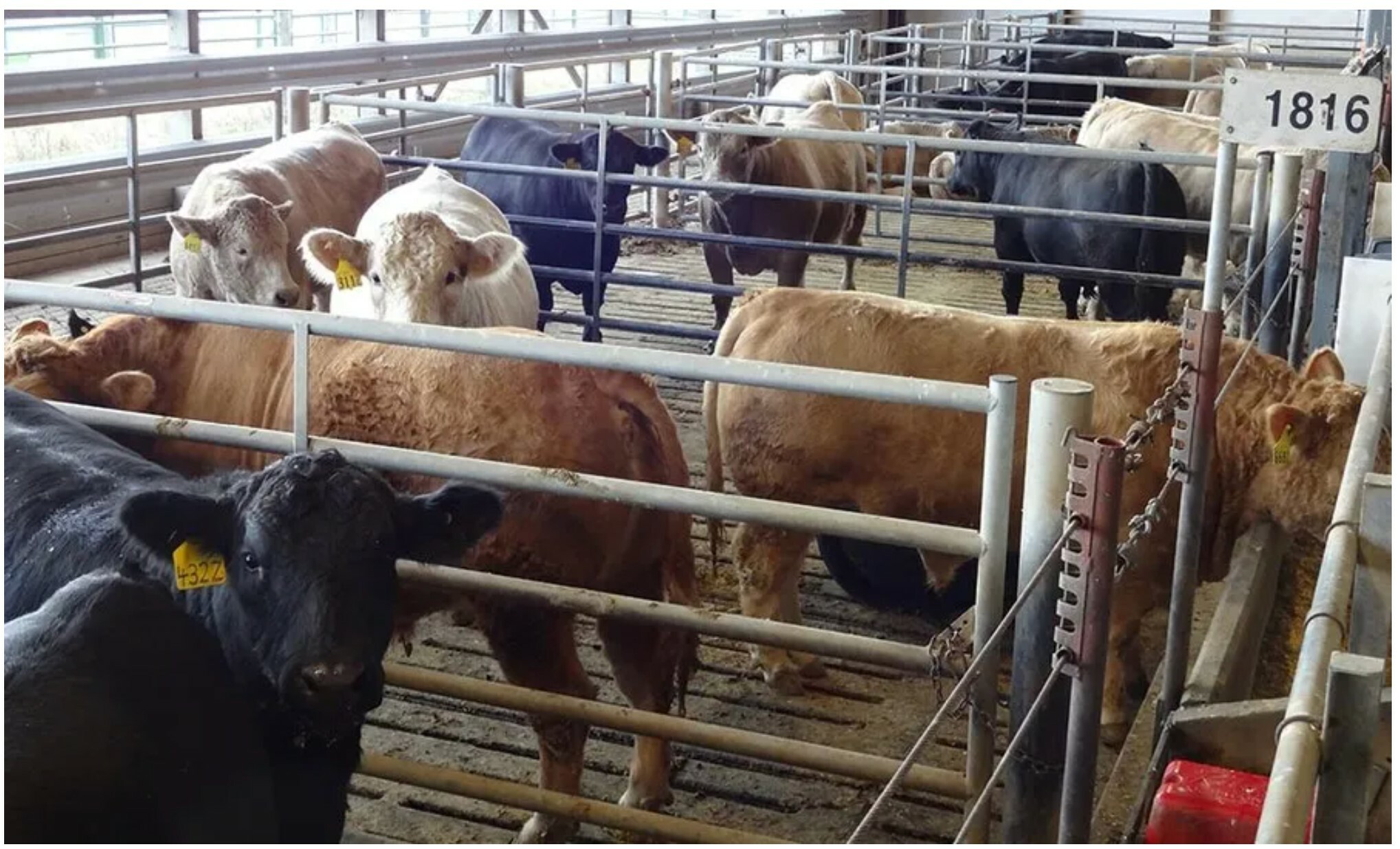
For more information about beef cattle, visit Penn State Extension Beef Cattle
Many opportunities exist for beef cattle producers. This publication covers basic concepts related to raising these animals. New and beginning producers should seek further information on not only basic production practices but also nutrition, reproduction, and health in order to produce high-quality, healthy animals.


